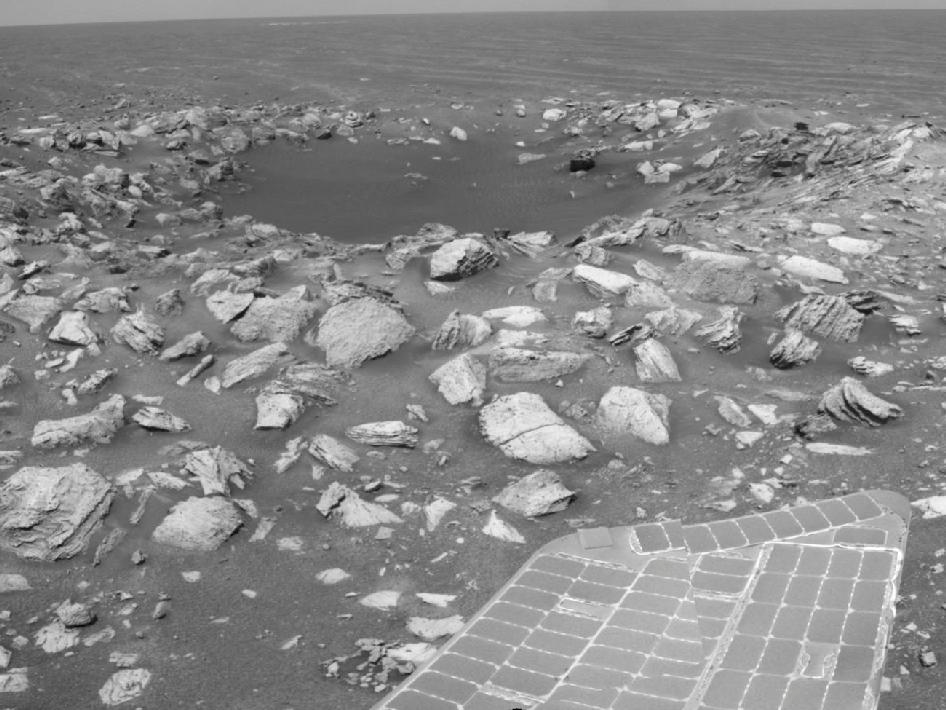Opportunity has passed many landmarks on its crater-hopping tour. One of the youngest of them is “Skylab” crater, which the rover passed last month. Rocks scattered by the impact of a meteorite surround the resulting crater in a view recorded by Opportunity on May 12.
This crater, informally named after America’s first space station, is only about 30 feet (9m) in diameter. Opportunity passed it as the rover made progress toward its long-term destination, Endeavour crater, which is about 14 miles (22 km) in diameter.
The positions of the scattered rocks relative to sand ripples suggest that Skylab is young for a martian crater. Researchers estimate it was excavated by an impact within the past 100,000 years.
Opportunity and its twin, Spirit, completed their three-month prime missions on Mars in April 2004. Both rovers continued for years of bonus, extended missions. Both have made important discoveries about wet environments on ancient Mars that may have been favorable for supporting microbial life. Spirit has not communicated with Earth since March 2010.
Opportunity has passed many landmarks on its crater-hopping tour. One of the youngest of them is “Skylab” crater, which the rover passed last month. Rocks scattered by the impact of a meteorite surround the resulting crater in a view recorded by Opportunity on May 12.
This crater, informally named after America’s first space station, is only about 30 feet (9m) in diameter. Opportunity passed it as the rover made progress toward its long-term destination, Endeavour crater, which is about 14 miles (22 km) in diameter.
The positions of the scattered rocks relative to sand ripples suggest that Skylab is young for a martian crater. Researchers estimate it was excavated by an impact within the past 100,000 years.
Opportunity and its twin, Spirit, completed their three-month prime missions on Mars in April 2004. Both rovers continued for years of bonus, extended missions. Both have made important discoveries about wet environments on ancient Mars that may have been favorable for supporting microbial life. Spirit has not communicated with Earth since March 2010.










